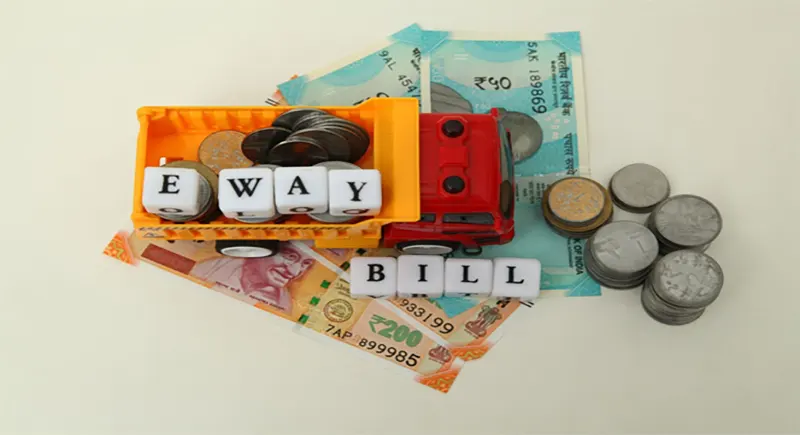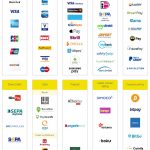In India, you are required to generate e-way bills in the prescribed EWB-01 format when the value of transported goods exceeds Rs. 50,000. You can easily generate such e-way bills using the E-Way Bill (EWB) portal. It is an online platform that allows you to:
- Generate single or consolidated e-way bills
- Update the vehicle number if the mode of transportation changes
- Cancel previously generated e-way bills
Alternatively, you can also create the e-way bills by sending specific SMS codes or through e-Invoicing (bills are auto-generated using e-Invoice systems).
Still confused and want to know more? In this article, let’s understand all these three modes of generating e-way bills in detail.
Some pre-requisites valid for any method of generation
Before generating an e-way bill, you must meet the following requirements:
- Registration on the EWB portal
You must be registered on the EWB portal. Without registration, you cannot access the system to generate bills.
- Invoice/ challan/ bill for goods
You must keep the challan, invoice, or bill for the goods ready. These documents contain important details about the consignment (value, quantity, and nature of goods). You will need these details while generating your bill.
- Details required for transportation by road
If goods are being transported by road, you need either the transporter ID (a unique number assigned to the transporter) or the vehicle number.
- Details required for transportation by rail, air, or ship
For these modes of transport, you must have a transporter ID, a transport document number, and a date on the transport document.
The 3 modes of generating an e-way bill
An e-way bill can be generated using any of the following modes:
Mode I: Via EWB portal
Follow these steps to generate an e-way bill using the EWB portal:
- Go to the EWB portal and log in.
- Look for the ‘e-way bill’ option on the left side of the dashboard.
- Click on ‘Generate new’ to start the e-way bill creation process.
- Now, you will see a form with multiple fields. Fill out the following details:
- Transaction type:
- Select ‘Outward’ if you are sending the goods (supplier).
- Select ‘Inward’ if you are receiving the goods (recipient).
- Sub-type:
- Choose the relevant sub-type that applies to your transaction.
- Document type:
- Choose the type of document you are using (like Invoice, Bill, Challan, Credit Note, etc.).
- Document number:
- Enter the invoice number or the document number of the transaction.
- Document date:
- Select the date the document was issued. The system won’t allow future dates.
- From/ to:
- Fill in the details of the sender (From) or receiver (To). If the sender/receiver is unregistered, mention ‘URP’ for Unregistered Person in the GSTIN field.
- Item details: Provide the details of the goods being transported:
- Product Name
- Transaction type:
- Description
- HSN Code
- Quantity
- Unit
- Taxable Value
- Tax rates (CGST, SGST, IGST) as applicable
- Tax rate of cess (if applicable)
- Transporter details:
- Mention the mode of transport (Ship, Air, Road, Rail).
- Enter the approximate distance in kilometres.
- Enter transporter name, transporter ID, transporter document number and date
- Enter the vehicle number if you know which vehicle will carry the goods.
- Submit the form and generate the e-way bill
- The system will check the information you entered.
- If there’s an error (like missing details), it will show an alert.
- If everything is correct, the e-way bill (EWB-01) will be generated with a unique 12-digit number.
This mode of e-way bill generation is highly suitable for high-frequency sellers active on online marketplaces and physical locations as they are required to make frequent shipments.
Mode II: Via SMS
In this mode, you can use the SMS facility to generate e-way bills using your registered mobile number. To do so, you will first have to register yourself for it. Follow these steps:
- Login to the EWB portal using your credentials.
- On the left-hand side of the dashboard, click on ‘Registration’ and select ‘For SMS’ from the drop-down menu.
- The mobile number linked to your Goods and Services Tax Identification Number (GSTIN) will be partly displayed on the screen.
- Click on ‘Send OTP’ to receive an OTP (One-Time Password) on this mobile number.
- Input the OTP received and click ‘Verify OTP’ to complete the process.
Please note that only mobile numbers registered with your GSTIN can be used. You can register up to two mobile numbers for one GSTIN. If your mobile number is linked to more than one user ID (username), a screen will appear showing all linked IDs. Here you select the desired user ID and then click ‘submit’ to complete registration for that specific user ID.
Now, once registered, you need to type in this SMS format – WBG TranType RecGSTIN DelPinCode InvNo InvDate TotalValue HSNCode ApprDist Vehicle
Please note that there must be a single space between each input.
Once typed, send the SMS to 7738299899. You will receive an immediate reply with the e-way bill details. This reply confirms that the e-way bill has been successfully generated.
Mode III: Via e-Invoicing
In e-Invoicing, you do not generate invoices on the GST portal. Instead, businesses need to submit a pre-generated invoice on a dedicated e-invoice portal.
Here the invoice is generated on the business’s own system, but before it can be used for tax purposes, it must be uploaded to the Invoice Registration Portal (IRP) managed by GSTN.
On IRP, such invoices are authenticated and assigned an Invoice Reference Number (IRN). Next, the invoice data is sent from the IRP directly to the GST portal and e-way bill portal in real time.
Starting August 1, 2023, businesses with an annual turnover exceeding Rs. 5 crores must comply with e-Invoicing for their B2B transactions.
Conclusion
As per the GST rules, you must generate an e-way bill if the value of transported goods is more than Rs. 50,000 in India. This system reduces paperwork and prevents tax evasion. Also, it benefits all the involved parties, like businesses, transporters, NBFCs, and tax authorities by providing real-time tracking and transparency.
Currently, you can generate an e-way bill through these three methods:
- Using the EWB portal
- Via SMS
- Through e-Invoicing
However, before using any method, you must get registered on the EWB portal. Without a valid registration, you cannot generate e-way bills.










